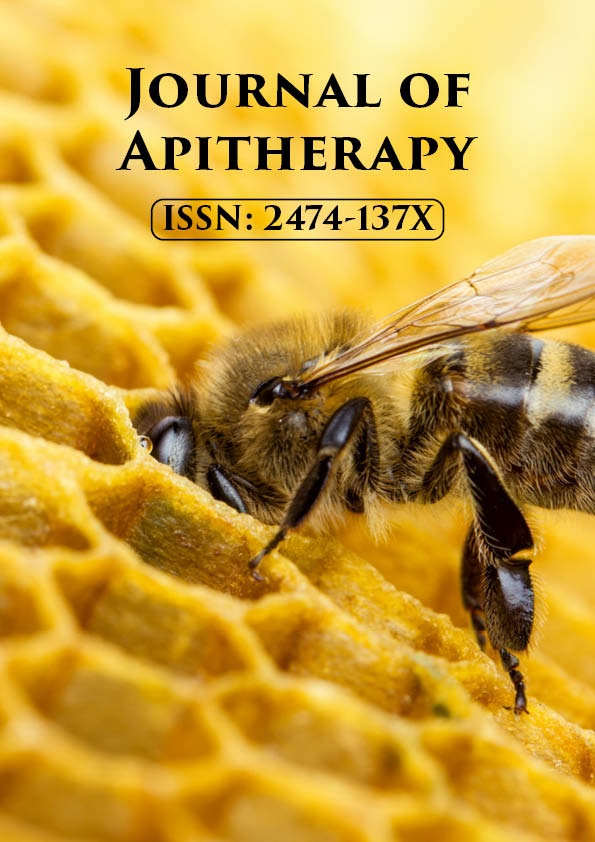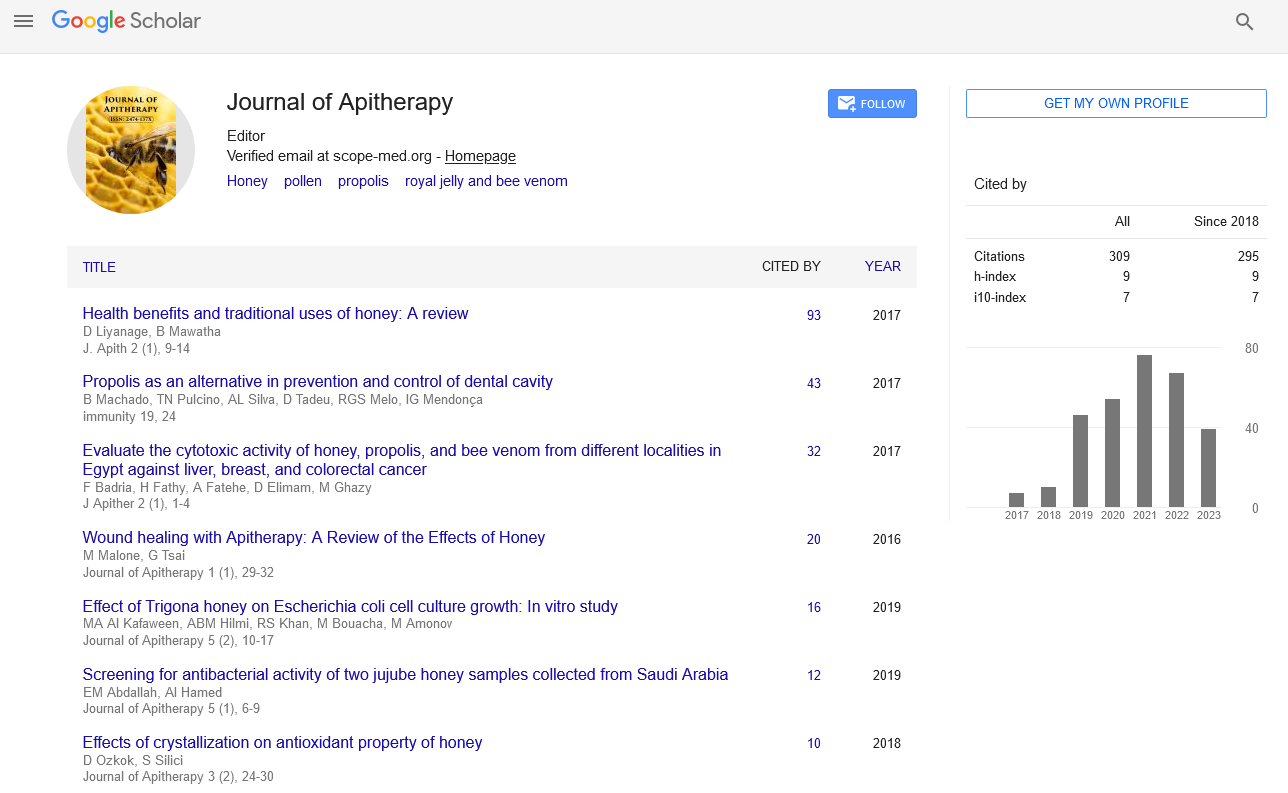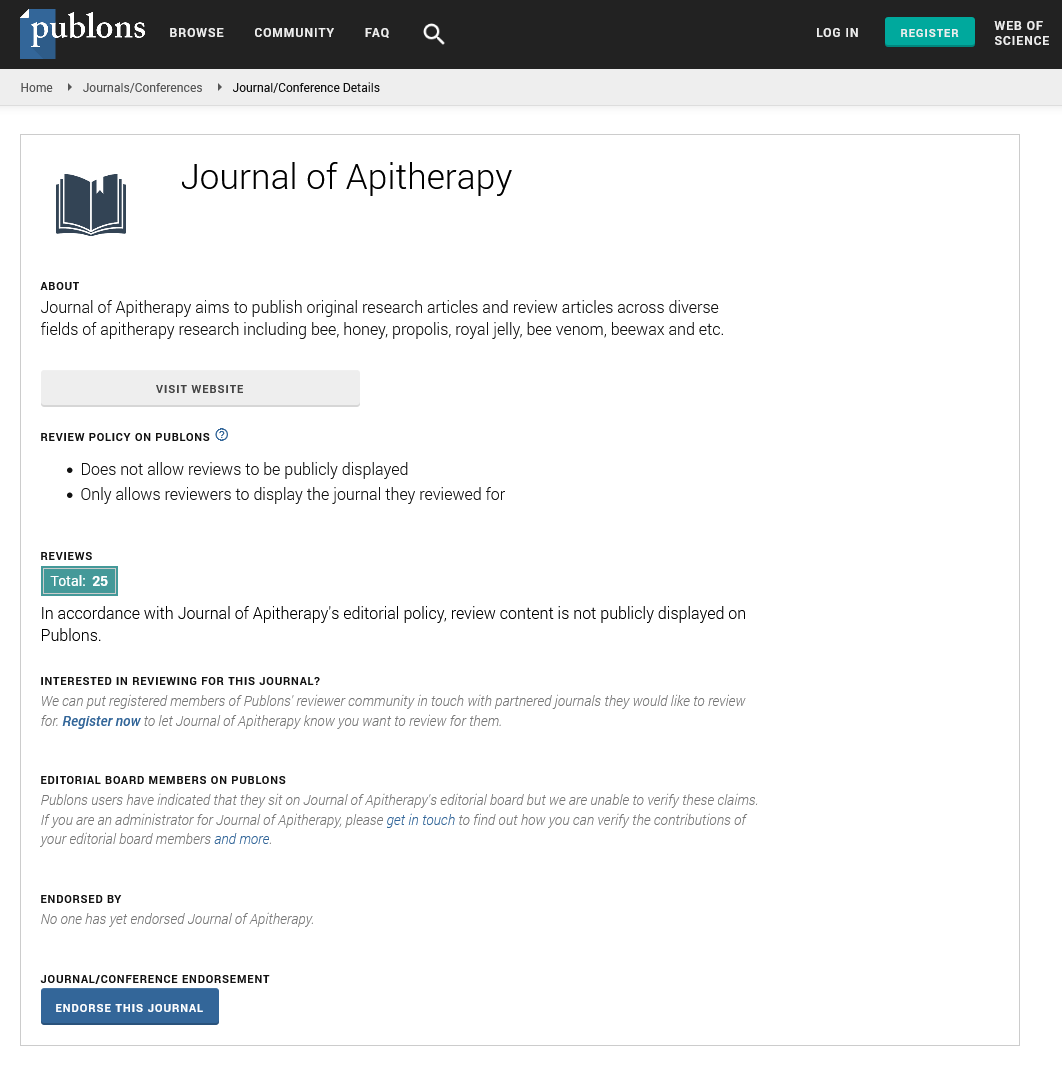Opinion Article - Journal of Apitherapy (2022)
Opinion on Bee Venom in Wound Healing
Ehsan Zeid*Ehsan Zeid, Department of Forensic Medicine and Toxicology, Zagazig University, Zagazig, Egypt, Email: dnehsanheshim@yahoo.com
Received: 05-Jan-2022, Manuscript No. JAPITHERAPY-22-52078; Editor assigned: 07-Jan-2022, Pre QC No. PreQC No: JAPITHERPAY-22-52078; Reviewed: 21-Jan-2022, QC No. QC No: JAPITHERPAY-22-52078; Revised: 26-Jan-2022, Manuscript No. JAPITHERPAY-22-52078 (R); Published: 02-Feb-2022
Description
Bee venom, also known as api-toxin, is commonly used to treat inflammatory disorders like rheumatoid arthritis and multiple sclerosis. It is also known that bee venom can aid in the healing of wounds. The regulation of the distinct phases of wound repair is aided by bee venom. It has anti-inflammatory, antioxidant, antifungal, antiviral, antibacterial, and analgesic effects, all of which help the wound heal more quickly. Hemostasis, inflammation, proliferation, and remodelling are the four phases of the stated process. Due to hypoxia, the wound healing process is slowed, which is a serious problem, especially in diabetes individuals. Bee venom is a complex mixture of natural chemicals derived from honey bees that contains peptides, enzymes, physiologically active amines, and nonpeptide components, among other pharmacological qualities. Bee venom, which has been involves injecting bee venom into precise sites. A growing body of research shows that bee venom possesses anti-inflammatory, anti-apoptosis, anti-fibrosis, and anti-arthrosclerosis properties. When combined with polyvinyl alcohol and chitosan, Bee venom speeds up wound healing by raising hydroxyproline and glutathione levels while reducing levels in wound tissues. Numerous studies have demonstrated the effect of bee venom on wounds, revealing that bee venom in the wound healing process has a curative effect and could be used as a new possible treatment for wound repair. Rather, we recommend that how such forces operate and evaluate the reparative tools that ‘nature has graciously offered. To achieve these goals, we took two ways. The first step was to revaluate the internal capacity of the elements that contribute the most to body healing, namely blood platelets. Second, natural agents such as whey proteins, bee venom, and propolis were revisited. The platelet approach elucidates the inflammation spectrum from physiology to disease, whereas diabetic wound healing is accelerated by milk and honey derivatives. Because of its anti-inflammatory properties and increased wound healing capacity, bee venom is a promising component of wound dressing. It was discovered to speed up the healing of diabetic lesions substantially. The wound healing process is hindered due to a number of factors. Bee venom has been discovered to reduce reactive oxygen species levels in animal blood and wounds, speeding wound healing since reactive oxygen species cause widespread cellular damage and hindered neovascularization. Bee venom, in addition to its antioxidant properties, has an antibacterial impact due to the presence of melittin and secapin. Melittin has antibacterial properties against Gram-positive and Gram-negative bacteria because it forms cell membrane channels. Secapin binds directly to the cell walls of bacteria, resulting in antibacterial activity. According to Park and Lee, bee venom has antifungal properties through an apoptotic mechanism. Melittin, the main component of bee venom, also has antiviral properties. The antiviral activity of melittin is based on the stimulation of interferon and, as a result, the suppression of viral replication in the host cell.
Copyright: © 2022 The Authors. This is an open access article under the terms of the Creative Commons Attribution NonCommercial ShareAlike 4.0 (https://creativecommons.org/licenses/by-nc-sa/4.0/). This is an open access article distributed under the terms of the Creative Commons Attribution License, which permits unrestricted use, distribution, and reproduction in any medium, provided the original work is properly cited.







